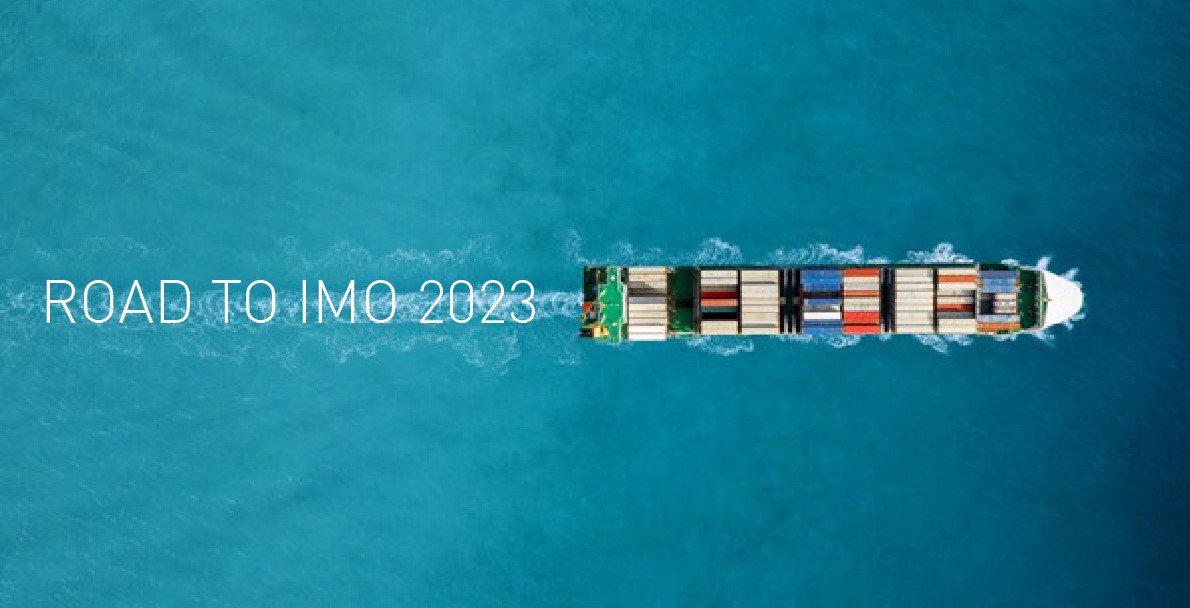Global shipping transports around 90% of world trade and generate nearly 3% of the worldwide CO2 emissions. To reduce this environmental impact in the future, the International Maritime Organization (IMO) introduced new measures and concrete decarbonization actions, including a carbon levy: IMO 2023.
The new IMO 2023 regulation was introduced on 1 January 2023 and focuses on two new mandatory rules: vessel efficiency and carbon emissions. As part of the International Maritime Organization’s Greenhouse Gas Strategy (GHG), IMO 2023 shall help to reduce ocean freight carbon emissions by 40% by 2030 and 70% by 2050 compared to 2008 levels.

There will be two new indexes coming into force with IMO 2023:
EEXI (Energy Efficiency Existing Ship Index)
EEXI is a rating system to evaluate the energy performance of vessels during operations. The system uses energy consumption data, along with speed, power, and engine size and also take the vessel specifications into account. Penalties and/or restrictions will be applied for vessels whose EEXI rating is below the required standard.
CII (Carbon Intensity Indicator)
CII will rank and monitor the vessel efficiency. In doing so, it will link GHG emissions, and the quantity of cargo carried, with the distance traveled ratio. To ensure compliance, the CII rating threshold will define a yearly carbon reduction factor. Moreover, vessel will be ranked from A (good) to E (poor). For vessels with D grades for three years, or an E grade for 1 year, corrective action plans need to be put in place.
Impacts caused by IMO 2023
These new regulations have started to impact the global shipping industry. Vessel owners and operators are increasingly investing into new/alternative fuel technologies and are continuously upgrading their vessel feels to comply with the new IMO 2023 regulations, which are being reviewed on a regular basis.
This could lead to tighter capacity, slow steaming and an overall competition on space while vessels will be maintained and modified. Moreover, shipping rates are likely to increase due to higher spendings on vessel modifications, clean fuels, etc, which are likely be passed to the freight payer in the end.
IMO 2022 continuously updated
IMO 2023 will continue to be further developed and specified in line with industry needs and developments. On 7 July 2023, the UN’s maritime organization has agreed on a revised climate strategy for 2050, agreed by the members of the IMO’s climate committee, MEPC. The revised measures aim for net-zero GHG emissions by or around 2050, i.e. close to, 2050, taking into account different national circumstances. Moreover, the committee agreed on indicative checkpoints for 2030 and 2040. In 2030, all GHG emissions should be reduced by 20% but striving for 30%, while in 2040 the target is 70% reduction, but with strive for 80%.
Read more on: IMO agrees on revised 2050 climate strategy for shipping
Our advice
We are here to keep you informed about the latest developments regarding IMO 2023 and will guide you as required. However, IMO 2023 is here to stay and included important measures towards greener shipping solutions, which everybody involved in the supply chain needs to take part in. Therefore, the latest IMO 2023 regulation is something you need to be aware of and follow closely. Feel free to contact Samuel Semple if you would like to know more about this topic.
Samuel Semple
Group Pricing Manager – Ocean Freight (FL)
P: +49 40 3233550M:+49 1732069897
E: samuel.semple@bertling.com

